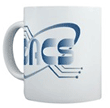Web 2.0 by John Lansdale While trying to explain the meaning of Web 2.0, I started thinking about our last presentation from Smart Computing and the one on MySpace in February. Both were essentially web products. Granted, there is an optional magazine from Smart Computing, but its essence, like MySpace, is on the web. You can ask questions, do various live searches, read the most current forum, and even chat with other readers. “Web 2.0, a phrase coined by O'Reilly Media in 2004,[1] refers to a perceived second-generation of Web based communities and hosted services ― such as social networking sites, wikis and folksonomies ― that facilitate collaboration and sharing between users. O'Reilly Media titled a series of conferences around the phrase, and it has since become widely adopted. Though the term suggests a new version of the Web, it does not refer to an update to World Wide Web technical specifications, but to changes in the ways systems developers have used the web platform. According to Tim O'Reilly, "Web 2.0 is the business revolution in the computer industry caused by the move to the Internet as platform, and an attempt to understand the rules for success on that new platform." [2] Some technology experts, notably Tim Berners-Lee, have questioned whether one can use the term in a meaningful way, since many of the technology components of "Web 2.0" have existed since the beginnings of the World Wide Web.[3]” As used by its proponents, the phrase "Web 2.0" can also refer to one or more of the following: ● The transition of web sites from isolated information silos to sources of content and functionality, thus becoming computing platforms serving web applications to end-users ● A social phenomenon embracing an approach to generating and distributing Web content itself, characterized by open communication, decentralization of authority, freedom to share and re-use, and "the market as a conversation" ● Enhanced organization and categorization of content, emphasizing deep linking ● A rise in the economic value of the Web, possibly surpassing the impact of the dot-com boom of the late 1990s … It’s not a software revolution, it’s a business revolution. And its emphasis is on peer-to- peer communication, not top town. N.B., (I typed this submission in Microsoft Word 2007 in which I already found a bug. When I cut the bulleted list from Wikipedia and pasted it, Word lost the list formatting and instead split the area vertically with a big space on the left and the list, un-bulleted on the right. To get it to work I had to paste into Word 2003 then copy if from there back into 2007. Even Open Office worked correctly. )
|
Mugs and more, visit CafePress to order
